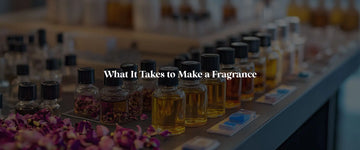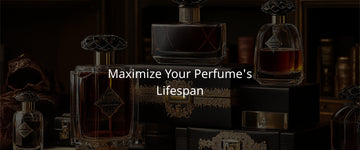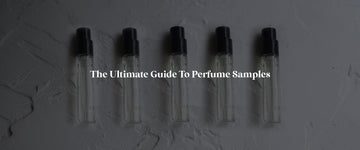Blending science, art, and time-honored techniques! Creating a fragrance is a meticulous process. Starting with gathering raw materials (almost 4500 listed so far) to the final bottling, each step requires precision and creativity.
And not to forget the toll it takes on your pocket. If you’re a hobbyist or planning to start a perfume line, remember crafting a fragrance is not a matter of a day or two. Also, this is something that requires passion, dedication, and your will to spend a fortune until you hit the right note.
This article is a present for avid perfumers like you you're interested in knowing what it takes to create a fragrance. We’ll be exclusively talking about creating one, so stay tuned.
What It Takes to Make a Fragrance: Steps to Consider
Nothing much than just time, resources, passion, dedication, and expertise! Here's the list of steps that steer you through the journey of creating a fragrance.
Sourcing and Extracting Ingredients
The journey of a fragrance begins with sourcing the raw materials. Depending on the decried scent profile, these ingredients can be natural, synthetic, or a combination of both..
Natural Ingredients:Natural sources are often the heart of many fragrances.
Top Floral Choices:
These include roses, jasmine, and tuberose. These are the popular choices for their rich, varied scents. These flowers’ aroma can vary depending on their origin, climate, and even the time of harvest.
Fruits:
Fruits like bergamot, lemon, and orange provide fresh, zesty top notes. Exotic fruits like mango and passionfruit are known for adding tropical flair to the fragrance.
Spices:
The use of spices in perfumery is centuries- old. Cinnamon and clove offer warmth and complexity, and woods like sandalwood and cedarwood contribute to the fragrance’s base.
Synthetic Ingredients:Synthetic ingredients act as a great contributor in the fragrance industry. They are created in laboratories to replicate natural aromas or introduce entirely new ones. This is especially helpful where natural extraction is either impossible or unsustainable, such as with lily-of-the-valley.
Also, synthetic ingredients cut the cost that one would require in case of natural ingredients, whose sourcing and extraction is time-consuming, costly, and laborious.
Extraction Methods:Extracting the essential oils from natural ingredients is a crucial step. Different methods are used depending on the material given below.
|
Steam Distillation |
|
|
Solvent Extraction |
|
|
Cold Pressing |
|
Understanding Fragrance Notes
Understanding the fragrance notes is an important component of perfume mixology and artistry. A fragrance is composed of multiple layers of scents, known as notes. Every note unfolds over time after the fragrance is worn.
Top Notes:
The top notes are the initial scents that hit your olfactory senses when you first apply the fragrance. These notes are usually light, fresh, and evaporate quickly.
Common top notes include:
- Citrusy elements like lemon and bergamot
- Light fruits such as apple and pear
- Herbs like basil and mint
Middle Notes:
Also known as heart notes, these form the core of the fragrance. Middle notes come into play once the top notes begin to fade.
Middle notes are often floral, Popular choices are:
- Rose
- Jasmine
- Lavender
Spicy elements frequently appear as middle notes. They’re known for adding warmth and depth to the fragrance. These are:
- Cinnamon
- Nutmeg
Base Notes:
The base notes provide the lasting impression of the fragrance and add depth and longevity. These notes are usually richer and heavier. Base notes linger on the skin long after the top and middle notes have evaporated, creating the final character of the fragrance.
Common base notes include:
- Woods like sandalwood and cedarwood
- Resins like amber and myrrh, and musks
Blending and Formulating the Fragrance
Here begins the real deal. Creating a fragrance is akin to composing music! Each note must be carefully balanced to create a harmonious blend.
Let’s walk through the various steps that complete blending and formulating a fragrance.
Balancing the Notes:
The ratio of top, middle, and base notes is key to achieving the desired scent. A fresh, light perfume may emphasize the top notes, with a lower concentration of base notes.
On the contrary, a deep, rich fragrance will focus more on the base notes, with fewer top notes to keep the scent from becoming overpowering.
Dilution and Fixatives:
Essential oils are highly concentrated and must be diluted before using them in perfumes.
Ethanol is the most common solvent for alcohol-based perfumes. It helps disperse the fragrance and evaporates quickly, leaving the scent behind.
In oil-based perfumes, carrier oils like jojoba or sweet almond oil (10-20%) are used for dilution.
Fixatives:
Fixatives are essential for prolonging the life of a fragrance. These can be both natural and synthetic.
Natural fixatives include animal-derived substances like musk and ambergris. These help the scent to evaporate slowly and allow it to linger on the skin.
Besides, modern perfumers often use synthetic fixatives to achieve the same effect while maintaining ethical standards.
The Aging Process
Every delicacy undergoes aging to emerge as a “Classy Possession”, be it cheese, wine, or a fragrance.
Once the fragrance is blended, it undergoes an aging process. This stage is crucial for allowing the different notes to meld and mature.
Maturing the Fragrance:
To allow a fragrance to mature, it is stored in a cool, dark environment for several months to a year. Alcohol and essential oils thus get enough time to bond fully, creating a more cohesive and well-rounded scent. Over time, the fragrance often becomes stronger and more complex.
Quality Control:
Once aged for a certain period, the fragrance undergoes rigorous testing. Experts evaluate the scent for consistency, check whether the fragrance maintains its intended profile and quality.
Any necessary adjustments, such as re-blending, are made during this stage. This ensures the fragrance meets the desired standards.
Filtration and Bottling
A fragrance undergoes final preparations to ensure it is ready for consumer use before it is bottled.The aged perfume mixture is cooled and filtered to ensure it is smooth, clear, and free of any impurities. Antioxidants like Butylated Hydroxytoluene are added to preserve the fragrance and extend its shelf life.
Finally, the perfume is carefully bottled in flacons designed to protect it from degradable effects of light and air.
Pro Tip: By minimizing exposure to oxygen and keeping the perfume in a dark, cool environment, its longevity is preserved.
Conclusion
People often wonder what it takes to make a fragrance. Time, patience, dedication, efforts, and a handful of money is what you need to craft the scent of your dreams. Besides concrete steps like blending and mixing various notes, perfumery requires you to be creative enough to make something unique, and truly yours.
This guide walks you through the laboratory of a perfumer. If you have been planning on making one of your own fragrance, we’ve given you a good kick to start.





